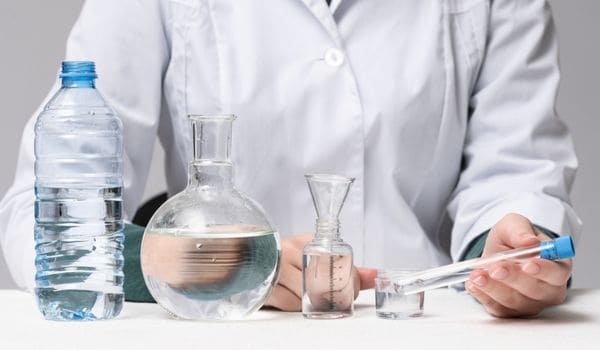Whole house water filters promise clean, safe water from every tap — but are they actually worth it?
With rising concerns over contaminants, pipe corrosion, and water taste, it’s easy to see why more homeowners are exploring point-of-entry filtration. But like any investment, it’s important to weigh the facts before jumping in.
Let’s break down what whole home systems really offer — and whether they’re the right fit for your setup.
✅ Quick Takeaways
- 🏠 Whole home filters treat water at the source — before it reaches your taps or appliances.
- 🚿 They can remove: chlorine, iron, sediment, sulfur, and other nuisance or harmful contaminants.
- 🔬 What you filter depends entirely on your water quality — a good water test helps you choose the right system.
- 💧 More convenient and lower-maintenance than under-sink filters — but they cost more upfront.
- 💡 Best for families who want peace of mind from every faucet, not just their kitchen.
🧰 What Is a Whole Home Filter?

Unlike under-sink or countertop systems that only treat water from a single tap, whole house filters (also called point-of-entry systems) clean all the water entering your home — from your kitchen faucet to your showerhead.
Installed where your main water line enters the house, these systems target a wide range of contaminants before they ever touch your pipes, fixtures, or appliances.
💡 Why it matters: If your water has chlorine, sediment, sulfur smells, or even bacterial risks — a whole home system means every drop of water, whether for cooking, bathing, or laundry, gets filtered at the source.
🎥 Video Help
My favorite show as a kid, yup, I’m that old :/ But, helpful nonetheless.
🧪 Common Filter Types
Whole house systems can be customized based on what’s in your water. Some filters are standalone, while others are stacked together in multi-stage units.
Here’s a quick breakdown of common filter types:
| 🧪 Filter Type | 💡 What It Targets |
|---|---|
| Sediment Filter | Dirt, sand, rust — clears up cloudy water and protects other filters |
| Carbon Filter | Chlorine, VOCs, and chemical odors — improves taste and smell |
| KDF Filter | Heavy metals and bacteria — often paired with carbon for extra protection |
| Activated Alumina | Fluoride and arsenic — ideal for certain well and city supplies |
| UV Disinfection | Bacteria and viruses — a must-have for homes with positive coliform tests |
| Water Softener | Hard minerals like calcium and magnesium — protects plumbing from limescale |
Even though each filter type handles a different job, the real magic happens when they work together. If your water has a mix of issues — like chlorine and sediment, or bacteria and hard minerals — stacking filters in a multi-stage system gives you broader protection without overcomplicating things.
💡 Pro Tip: Don’t guess your setup — test your water first, then choose filters based on what you’re actually dealing with. It’ll save you money and make your system way more effective.
🏠 Why Homeowners Go This Route

Whole house systems aren’t just for “water snobs” — they’re built for homeowners who want cleaner, safer water from every tap. Unlike a countertop or fridge filter, these setups protect your whole home — plumbing, appliances, and all.
| ✅ Advantage | 💡 Why It Matters |
|---|---|
| Whole-Home Coverage | Treats all water before it enters your home — great for showers, laundry, and dishes. |
| Better for Plumbing | Reduces scale, rust, and sediment that can clog pipes and damage appliances. |
| Less Maintenance | Larger filters last longer than point-of-use systems — fewer cartridge changes. |
| Customizable | Easy to upgrade with add-ons like UV, iron filters, or water softeners as needed. |
| Eco-Friendly | Reduces need for bottled water and throwaway filters — better for the planet. |
| Boosts Home Value | Many buyers see whole-home filtration as a major upgrade, especially in areas with known water issues. |
💬 Why It Pays Off Long-Term
Whole-house systems are built for efficiency and convenience. Whether you’re sick of chlorine showers or want peace of mind after a sketchy water report, these filters help future-proof your water quality. See how these systems actually work? Here’s a breakdown of whole-home filtration — from inlet to outlet.
⚠️ What Are the Downsides?
While whole-home filters have clear perks, they’re not a one-size-fits-all solution. Depending on your setup, they might be more than you need — or more than your plumbing can handle.
| 🚫 Drawback | 💡 What to Watch For |
|---|---|
| Higher Upfront Cost | Quality systems range from $500 to $3,000+ depending on filter type and flow rate. |
| Plumbing Required | Most units need to be installed on your main line — that may mean cutting pipes or hiring a pro. |
| Bulky Size | Some filters take up 2–5 feet of space and may not fit in tight utility areas or crawlspaces. |
| Permanent Setup | Unlike countertop filters, these aren’t coming with you if you move without replumbing. |
| May Reduce Pressure | Filters slow down water slightly — especially if your well already struggles with flow rate. |
| Not Always the Strongest Filter | Whole-home units can’t use RO membranes, so they might miss finer contaminants like fluoride or VOCs. |
💡 Still On the Fence?
If you’re leaning toward filtration but not quite sold on a whole-house unit, point-of-use options like under-sink RO filters offer targeted protection with fewer installation headaches — and can be surprisingly powerful.
🧪 Why Water Testing Comes First

Before you commit to a filter, you need to know what you’re actually filtering. Guessing based on taste or smell can lead to overspending — or worse, under-treating.
| 🔍 Test Type | 💡 What It Reveals |
|---|---|
| DIY Strips | Basic info on chlorine, hardness, iron, and pH — but not super accurate or thorough. |
| Local Lab Test | Professional results for contaminants like lead, bacteria, and nitrates. |
| Mail-In Kits (like Tap Score) | Full contaminant panel with treatment recommendations — great for well and city water. |
💡 Pro Tip: If you’re on a private well or concerned about aging plumbing, a complete water test panel is a smart move before investing in filtration. It can also help catch issues like: coliform bacteria or excessive iron — which not all filters can handle.
✅ Wrapping It Up
Whole house water filters aren’t just about cleaner drinking water — they’re about peace of mind. From cutting chlorine exposure to protecting your pipes — they bring comfort and cleaner water to every corner of your home.
But they’re not one-size-fits-all.
💡 Start with a water test, then match the solution to your needs — not the other way around. Whether you’re tackling chlorine, iron, sulfur, or something sneakier like coliform, the right filter makes all the difference.
Clean water shouldn’t be a luxury. If you’re ready to protect your whole home, now you’ve got the facts to do it smart.
 98 people found this helpful. Was this guide helpful to you?
98 people found this helpful. Was this guide helpful to you? 


